-
*Astrella.
User deleted
The Mysteries of Rosslyn Chapel - Scotland - Part One

William Sinclair (1410–1484), 1st Earl of Caithness (1455–1476), 3rd Earl of Orkney (1455–1470), Baron of Roslin was a Scottish nobleman and the builder of Rosslyn Chapel, in Midlothian.
According to Dr Robert Lomax, Rosslyn Chapel was bulit to house artifacts brought by the Knights Templar to Scotland in 1126. Lomax states "Between 1118 and 1128 the Templars excavated the ruins of Herod’s Temple in Jerusalem.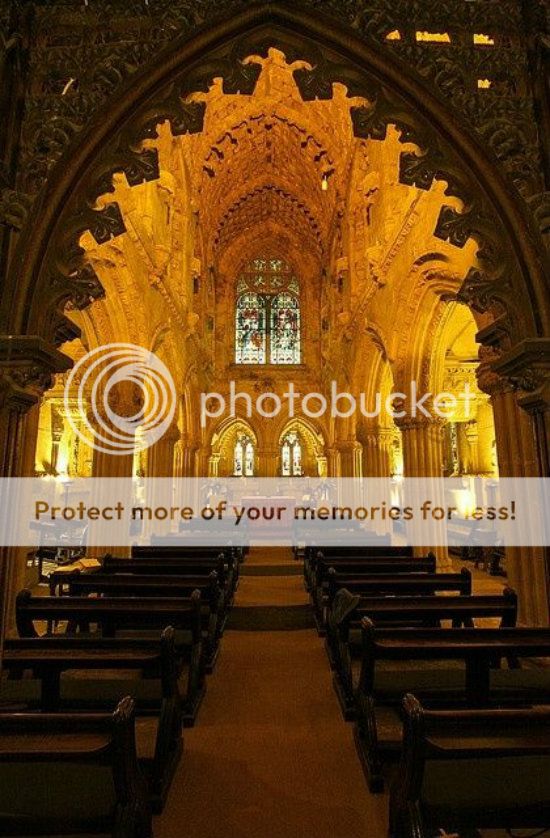
Hugue de Payen, first Grand Master of the Knights Templar, served on the First Crusade with Henri St Clair, First Earl of Roslin and Hugue visited Roslin in 1126 where he was given land to build the first Templar Preceptory outside the Holy Land" .
It is possible these artifacts remain hidden in the burials vaults under the chapel floor.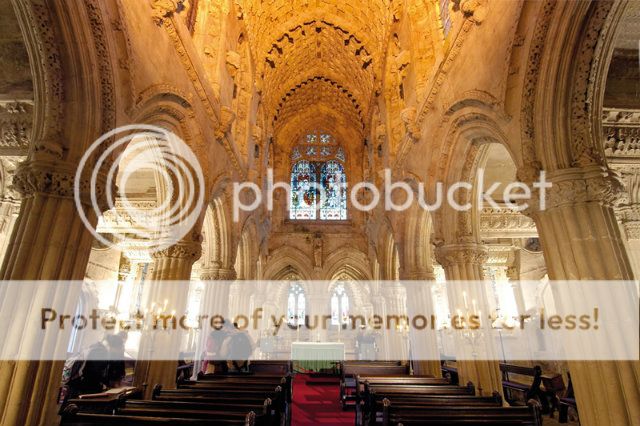
Construction of Rosslyn Chapel began on 20 September 1456, although it is often recorded as 1446. The confusion over the building date comes from the chapel's receiving its founding charter to build a collegiate chapel in 1446 from Rome.
Sinclair did not start to build the chapel until he had built houses for his craftsmen . The orientation is due east & west, marked out by the solar ray by ancient tradition. A double equilateral triangle regulates the proportions at Rosslyn .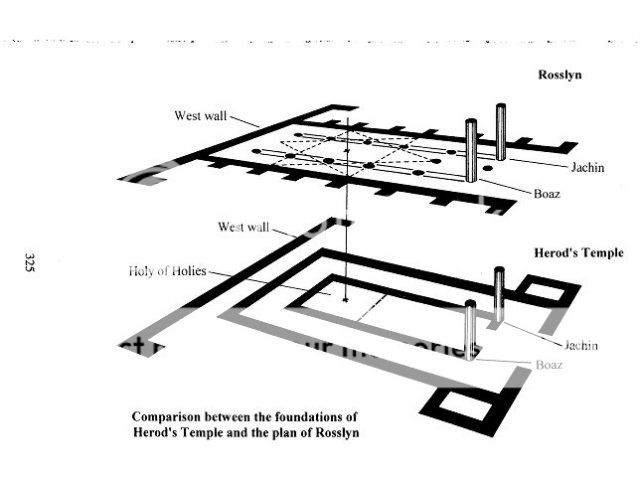
Rosslyn Chapel Floor Plan
The decorative carving of the chapel was executed over a forty-year period. After the founder's death, construction of the planned nave and transepts was abandoned.
The Lower Chapel (also known as the crypt or sacristy) should not be confused with the burial vaults that lie underneath Rosslyn Chapel .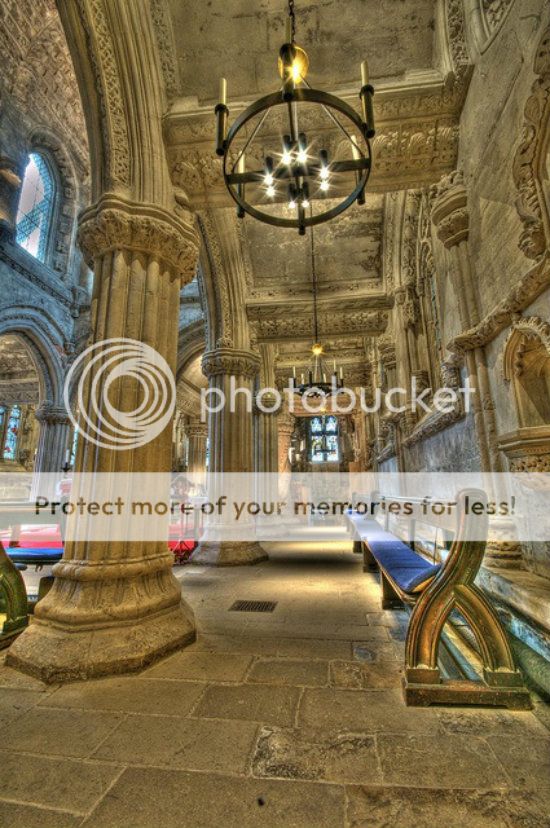
The chapel stands on fourteen pillars, which form an arcade of twelve pointed arches on three sides of the nave. At the east end, a fourteenth pillar between the penultimate pair form a three-pillared division between the nave and the Lady chapel.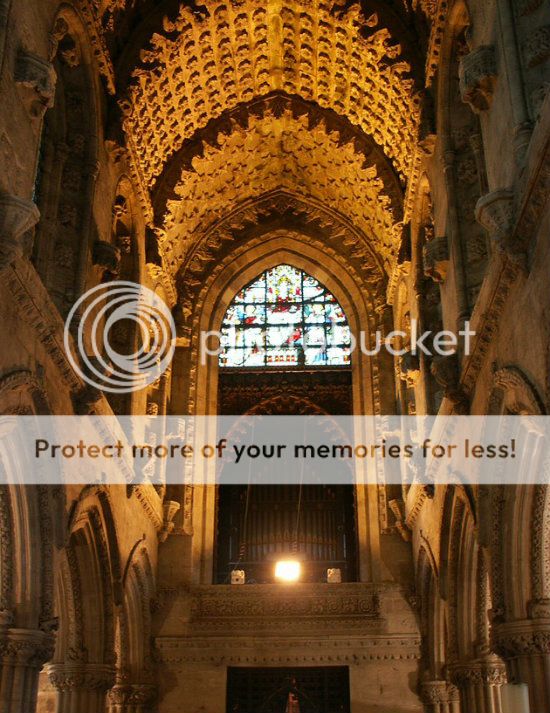
The three pillars at the east end of the chapel are named, from north to south: the Master Pillar, the Journeyman Pillar, and most famously, the Apprentice Pillar. These names for the pillars date from the late Georgian period — prior to this period they were called The Earl's Pillar, The Shekinah and the Prince's pillar.
All the carvings in Rosslyn were first cut in wood and produced to the Master of Works for inspection before being cut in stone. This is one of the earliest examples of Quality Control in Britain.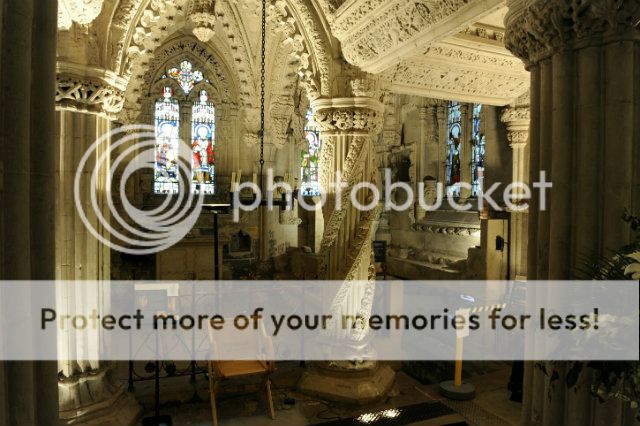
The Apprentice Pillar
The layout of Rosslyn, which was started in 1440, is an exact replica of the ground plan of the Third Temple, built in Jerusalem by Herod and destroyed in the First Century by the Romans . The layout of Herod's Temple was not known to archeologists until the mid nineteenth century, nearly four hundred years after the construction of Rosslyn; The Sinclair Family were keepers of secrets.
Rosslyn and Herod's Temple from The Hiram Key by Dr Rober Lomax
On the architrave joining the The Apprentice Pillar the chapel's only Latin inscription reads "Forte est vinum fortior est rex fortiores sunt mulieres super omnia vincit veritas", which means "wine is strong, a king is stronger, women are stronger still, but truth conquers all".
The quote comes from the story of Zerubbabel in 1 Esdras, an ancient Greek version of the biblical Book of Ezra in use among ancient Jewry and the early church.
Forte est vinum fortior est rex fortiores sunt mulieres super omnia vincit veritas. Wine is strong, a king is stronger, women are stronger still, but truth conquers all
Mention of Zerubbabel primarily serves the purpose of describing the return to Judah following the exile from Babylon and the construction of the Second Temple. 1 Esdras 3-4 tells the story of a speech-writing competition between three bodyguards of Darius I, in which the winner would receive honor and riches from the King.
The first two spoke about the strength of wine and the strength of kings, respectively, but the winner was Zerubbabel, the third bodyguard, who spoke about the strength of women and truth. After Zerubbabel won the competition, he was given sanction to rebuild the Temple in Jerusalem (Herod's Temple, described above) and return the sacred Temple vessels that Nebuchadnezzar II had preserved after the conquest of Babylon.
Though he is not mentioned in Craft Freemasonry, Zerubbabel is considered to be of great importance to a number of Masonic bodies. Within the Holy Royal Arch, and Royal Arch Masonry he is considered to be a ruling principal. In the Knights Templar his example of truth and fidelity is used as the foundation of the Illustrious Order of the Red Cross. All three degrees of Knight Masonry deal specifically with the life and time of Zerubbabel.
The inscription on one of the grave stones inside the chapel reads: "William de St. Clair, Knight Templar". Although it is uncertain to which of the many William Sinclair’s this refers ; dating of the sword hilt shape and the Lombard lettering suggest one particlar William St Clair who fought with Robert the Bruce at Bannockburn and died in 1328 while taking Bruce's heart to buried in Jerusalem .
The St Clairs of France later became the Sinclairs of Scotland.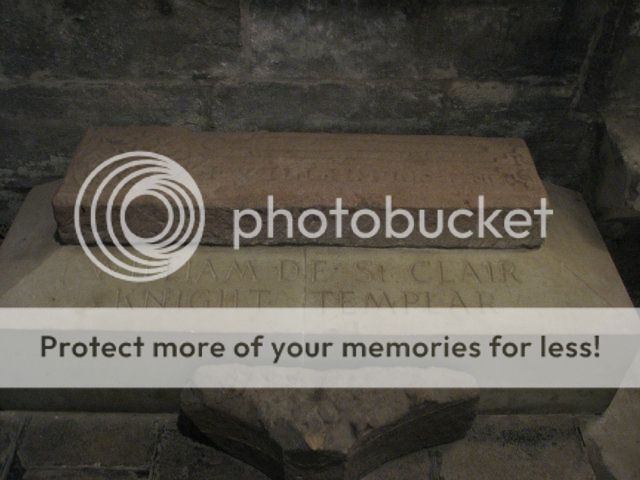
Gravestone of William de St. Clair, Knight Templar at Rosslyn Chapel
The grave stone symbols are shown below. According to author Andrew Sinclair the crusading sword lies next to the symbol of the holy grail, which represents the knight's quest to experience unity with the divine .
A small templar cross and the knight's name are carved on the other side of the grail symbol. The last two letters ER are turned up in a right angle in the set square pattern of Templars and masons .
At the base of the grail symbol are 3 steps, which are used in Freemasonry as symbol of the 3 degrees of initiation in the Blue Lodge. At the top is an octagon with a fleur de lis blosoming from each corner, which mirrors the octagonal Dome of the Rock on Temple Mount, from where the Templars originally operated.
Gravestone of William Sinclair
Eight pointed arches in the Lady Chapel re-enforce the octagonal theme.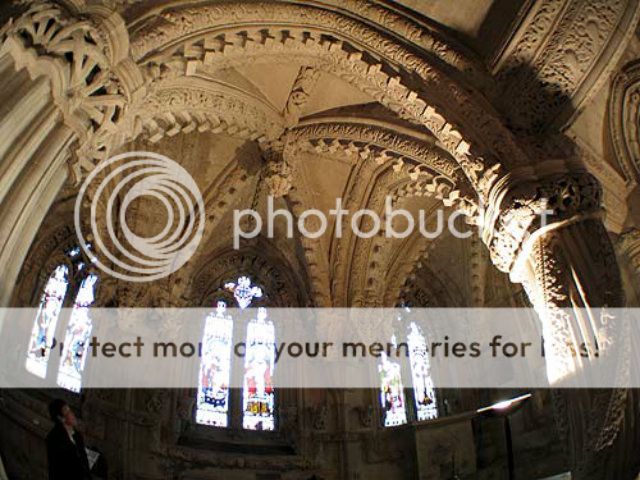
Eight Pointed Arch in The Lady Chapel and Journeyman Pillar (left) and Apprentice Pilllar (right)
End Part One..
The Mysteries of Rosslyn Chapel - Scotland - Part One1 Aprile 2014 |


